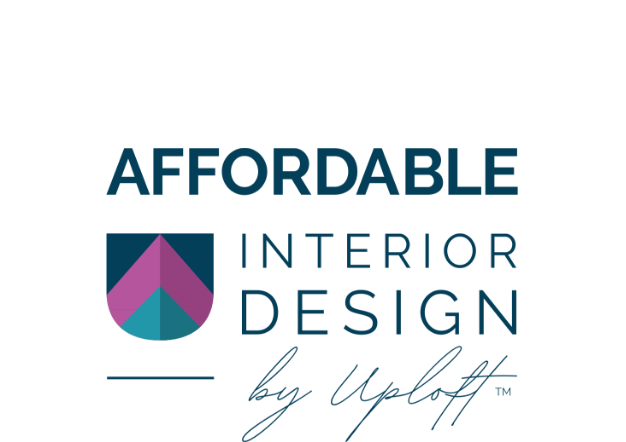LIGHT IT UP!
Lighting is one of the most important elements in design. First, it lets you see everything in the room, and second, it warms up the space and creates that cozy feeling we all enjoy so much.
I want your space to glow with warmth and beauty, so I am sharing some basic principles to consider when thinking about the ideal lighting for your room.
Let’s start with some general overarching points that hold true for any design situation.
Every room needs 3 points of light on a human level. This is true for every single room, no matter how big or small. “On a human level” means anything that’s not too much taller than we are, like floor lamps, table lamps, and sconces. These create cozy pools of light in your room that not only help illuminate it but also help create more defined areas. Don’t count any overhead lights in the three points, as these are much harsher and don’t have the same effects.
Lamps must be 100 watts or higher. Anything lower than 100 watts is not actually a lamp, it’s a candle; it might be good for writing a letter to your favorite Downton Abby character, but probably won’t be useful for much else, since it won’t illuminate the room. If you’re in love with a lamp that only takes a 60 watt bulb, that’ okay! Just don’t count it as one of the room’s three points of light. And whatever you do, don’t put in a higher watt bulb than the lamp can handle.
For the softest lighting, stick with incandescent bulbs. I know people are getting rid of incandescent and going the way of the energy-saver lightbulb these days, but there’s reason for hesitation. Aside from the not-so-ideal lighting they provide, new studies are suggesting that CFL bulbs may not be so healthy. Plus, they don’t work with a dimmer!
Another option is Philips hue bulbs, which allow you to select the color and hue you want, but they are very expensive, and you need to be a little tech savvy to work with them.
Get a 3-way switch or dimmer. A three-way switch or dimmer is a really fabulous accoutrement to your lighting, because it lets you control exactly how much light is in the room. Many lamps don’t come with dimmers, but you can buy a plug-in dimmer from Amazon or a local hardware store. It’s just a cord that plugs into your lamp and into the wall, and it has a full range so you can control exactly how much light you want at a given moment. And the best part? It only costs around $10.
Now that we’ve covered the basics, let’s talk specifics.
Table Lamps
Table lamps bring color, texture, and interesting shapes to your room. They add so much visual interest, it’s almost like buying a sculpture but at a much more affordable price!
Select a lamp with a different texture than that of the table. For example, you would never select a wooden lamp for a wooden table. Otherwise, you won’t have any contrast, and all the visual interest will get lost.
The height of your table lamp should be within 3 inches of the height of the table. If your table is 26 inches high, don’t choose a lamp that is less than 23 inches high. Ideally, your table and table lamp and would be the exact same height.
In general, choose white or off-white lamp shades. This is particularly important in any room that really needs the additional lighting, because a shade of any other color will diffuse the amount of light you get. A black shade lets out very little light, and too many colored shades in a room starts to look themey.
Use the shade that comes with the lamp. Shades attach to table lamps in different ways, so if you must buy them separately, it’s important to get a shade from the same company — and even the same line — as your lamp to ensure the shade will be stable.
Floor Lamps
Floor lamps give a room height. Just as the New York City skyline is appreciated for its undulation — the variation between high and low buildings — your rooms can benefit from undulation too. Your living room, for example, may have some bookcases that are high, some tables that are low, a wingback chair that is a little higher, and normal chairs that are lower. If your room is lacking height, as many are, adding a floor lamp can give it that skyscraper effect we love so much in Manhattan.
Keep the base simple. Remember that you want the lamp for the height it adds, so it doesn’t make sense to make the floor the focal point.
Choose a 150 watt lamp or higher. This will provide a large swath of illumination and can do a lot of work for you in a dark room.
Sconces
Sconces are lighting that is roughly eye-level or a bit higher and typically hardwired into wall. They were a common pre-war design feature, but most modern rooms no longer incorporate them.
Choose a wall lamp. If you want light on the wall because you live in a micro apartment where there’s no room for extra tables, or you want to illuminate a particular piece of artwork, you can choose a wall lamp to mimic a sconce. Wall lamps attach to the wall with a dangling cord, which is usually covered to conceal the plastic, so it looks like a continuation of the fixture. Because they are mounted externally, you don’t need an electrician, just a screwdriver!
Recessed Can Lights
Recessed can lights were very popular in the 1990s but have fallen out of favor because the light they emit is so harsh and they burn out fairly quickly.
Purchase retrofit dimmable LED lights to replace recessed can lights. You can find these at Amazon for under $20 apiece, and they’re so simple to install. All you have to do is measure the diameter of the recessed light, buy the right size bulbs, and pop the LED bulb in where the canned bulb comes out — they hook right up to the cords already hanging there. Making the switch will immediately transform that bulky, hollowed-out floodlight into sleek lighting that is flush against the ceiling. And don’t forget to get the bulbs that are dimmable.
A room’s lighting sources are an integral part of its design. Don’t make it an afterthought! With these tips in mind, you should be able to pick out the perfect way to light up any room.
Interior Design for Every Budget. We Make Design Accessible, Not Intimidating.
© Affordable Interior Design by Uploft



